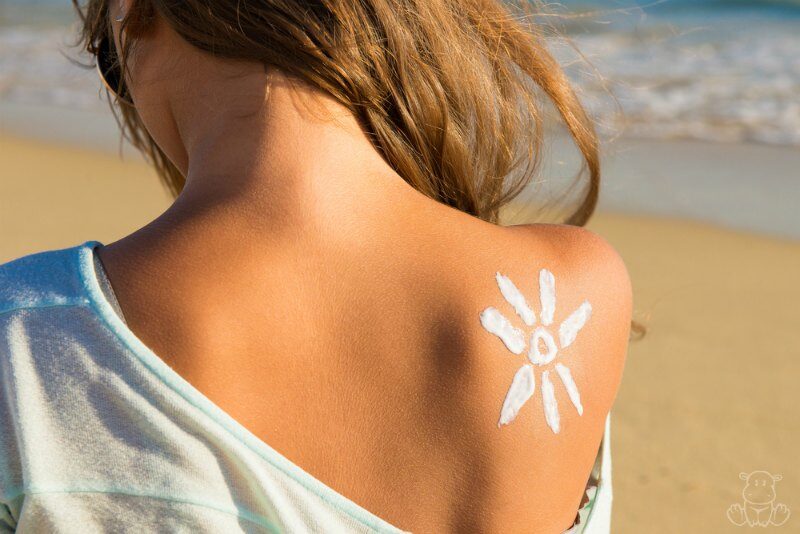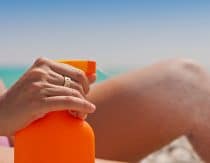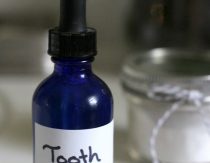
Chemical Sunscreens Can Be Really Scary . . .
Most of the active chemical ingredients contain potent endocrine disruptors, and experts believe exposure to them is changing us for the worse. And as we talked about yesterday, many “healthy” mineral sunscreens contain nanoparticles which have been linked to accelerated skin aging, cancer and environmental toxicity. Not to mention that many of them use omega-6 rich oils such as soy and sunflower/safflower, which may disturb the healthy balance of fats most likely to resist oxidation.
Most days we skip sunscreen altogether and use antioxidants instead, but on days we are going to be out much longer than usual we do use sunscreen.
Based on all the scary stuff I just mentioned you may be asking if there are ANY sunscreens I’d recommend. Thanks to this sunscreen review by Katie over at Kitchen Stewardship, the answer is yes. Most days I skip the sunscreen and let antioxidants do the work, but for long days at the beach Green Screen is something I would be comfortable using on my family. It’s not perfect – it contains a small amount of soy – but it’s very good overall.
(Where to buy my top sunscreen pick)
Loving Naturals also has a pretty good one. They actually list the micron size of their zinc oxide – it’s within range of normal particles so I’m guessing it’s not micronized. The only thing I’d change is switch out the omega-6 rich sunflower oil for something else. Not a huge deal to me, though. And yay! They have a baby version, too!
Where to buy my #2 sunscreen pick
What’s The Difference Between Nano-sized and Micronized?
Good question! Micronization is a grinding process, not a size. It can be used to make nanomaterials (100 nanometers or smaller, usually around 10-50), or something smaller than nanosize but larger than the non-micronized “bulk” form that has been shown to be non-toxic (200-500 nanometers).
From what I understand, micronization appears to create at least some nanoparticles through it’s process even when the targeted size is larger . . . kind of like leftover sawdust. So even if it is “non-nano” micronized there is still a possibility it contains nanomaterial. Bulk forms that have not been subjected to micronization do not carry that risk. This may not be a factor at all (reports are conflicting), but for now I’m staying away from them.
Now, Before We Get Started . . .
There are a couple more things I should mention. First, the reason micronized and nanosized particles are so popular is that they rub in clear. The recipe I’m sharing might make you look a bit pasty, but if you want you can tint it with mineral powder (details with the recipe).
Also, titanium dioxide photodegrades pretty quickly and there’s evidence that it may become toxic in the process, so I prefer to use zinc oxide. Unfortunately, both zinc and titanium can leave white marks on dark clothes, so be careful when applying.
Last thing: This formula works immediately, so there’s no need to wait to go outside. However, it is not waterproof, so reapply after swimming. Now, are you ready to make some homemade sunscreen?
Simple Homemade Sunscreen Recipe
Ingredients:
- 1 batch homemade lotion, or 3/4 cup premade lotion with good, antioxidant rich ingredients like virgin coconut, avocado or olive oil. Here’s what I would use. If you’re using a scale the total weight should be about 9 oz.
- 2-7 tablespoons uncoated, non-nano zinc. Amount will vary based on the level of coverage you want (Find it here)
- Cocoa powder for tint (optional) – (Find cocoa powder here)
Special Equipment:
- food processor (Here’s the one I have)
- mask (Nanoparticles should not be breathed because of lung damage but I couldn’t find a definitive answer on zinc. I just covered my face with my t-shirt. Okay, I didn’t really, but maybe you should :))
Method:
- If you’re using my homemade recipe (which is 9 0z. weighed), add the zinc oxide right after you make the lotion. See below for details on how much to add.
- If you’re using a pre-made lotion, warm it in a water bath and then add/blend in the zinc oxide in a food processor.
- Add essential oils and tint as desired.
- How you store depends on the composition of the lotion you used. If it’s premade it probably contains preservatives, so room temp is fine. If it’s coconut oil it will last at room temp for quite awhile, but longer if stored in the fridge. Olive oil tends to go bad quicker than coconut oil, so I’d probably store that in the fridge from day 1. I’m not sure about avocado oil, but I’m thinking fridge. I’ll bet it hardens when it gets cold like coconut oil, though, so you’d want to let it warm up before use).
Deciding How Much Zinc Oxide To Add
Anywhere from 5-20% of the total solution is generally considered to be effective, with 20% having a higher level of protection. You may find the information below helpful in determining your measurements. I have not tested these ratios in a lab for SPF value.
If you’re looking for moderate protection, measure the lotion you are going to use and then add 10% of it’s weight in zinc oxide.
For example, 8oz. (weighed) of lotion + .8oz of zinc oxide (weighed) = 10% zinc ratio
Or 8 oz (weighed) of lotion + 1.2 oz zinc oxide (weighed) = 15 % zinc ratio
Note: Huge differences in SPF numbers are actually pretty insignificant when it comes to differences in protection. SPF 100 blocks 99 percent of UVB rays, while SPF 50 blocks 98 percent. SPF 30 blocks 96.7 percent, SPF 15 blocks 93%.
Resources:
AOL News: Study Says Many Sunscreens May Be Accelerating Cancer
Photo credit: earthly delights
Want more research-backed natural remedies?
No problem, I’ve created a free ebook for you – Kitchen Apothecary: 25+ Natural Remedies Using Ingredients From Your Pantry – as a gift for signing up for my newsletter. You’ll also get updates when I post about safe essential oils for pregnant/breastfeeding mamas, exclusive gifts and coupons (I was able to give away a jar of free coconut oil to anyone who wanted it recently!), plus other goodies.
Sign up using the form below.




